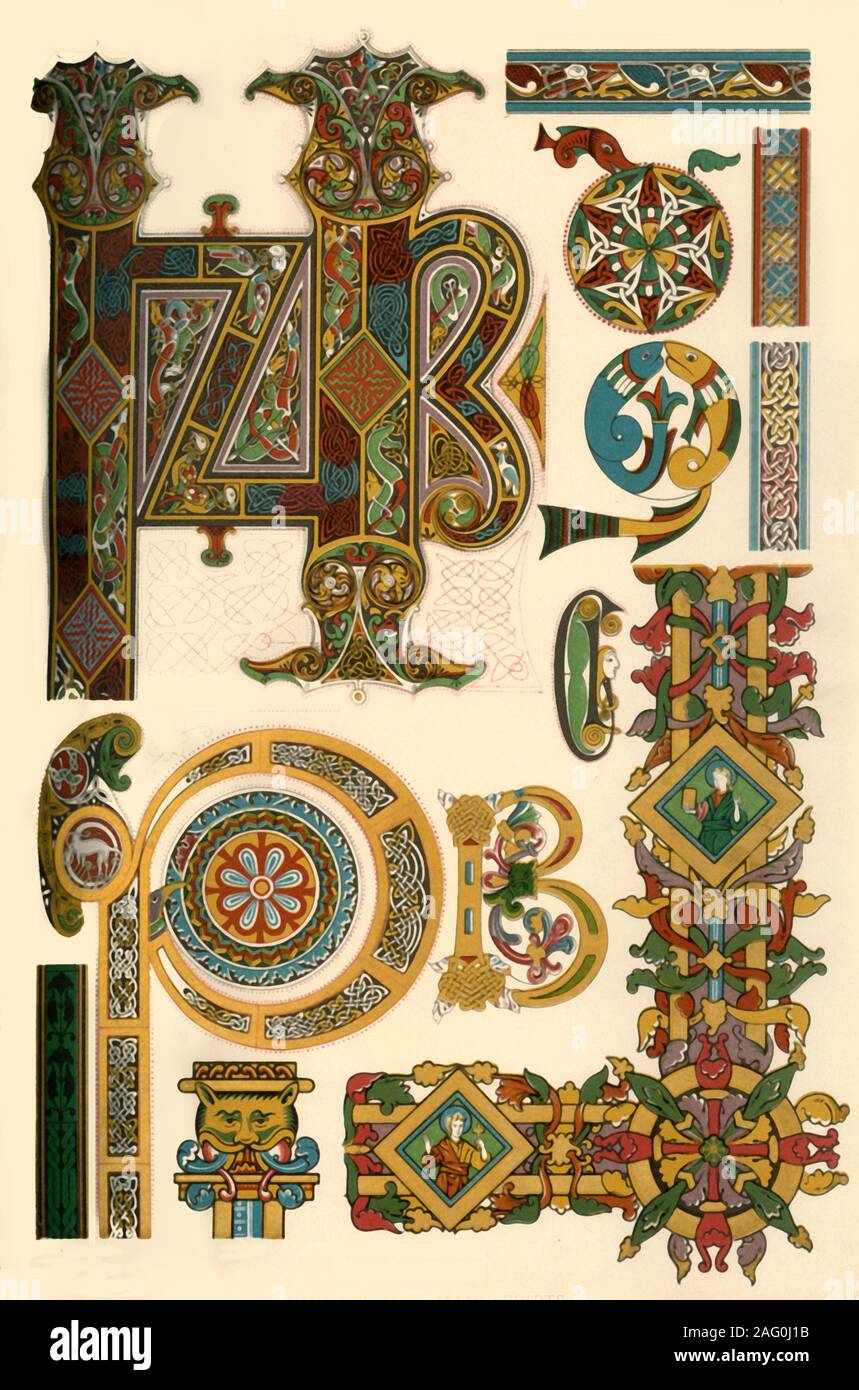Celtic illuminated manuscripts, (1898). The lettering at top left is from the Lindisfarne Gospels, probably produced c715-720 AD in the monastery at Lindisfarne, Northumberland, and now in the British Library, London. 'Figs 1-5: 7th century. Figs 6 and 7: 8th century. Figs 9-11: 10th century. Fig 12: 11th century...For Celtic interlacing work, either filling up the spare surfaces of the letters or bordering the separate pages, the limbs or bodies of snakes, birds, dogs and fantastical animals were employed...Occasionally the human figure occurs, whereas the vegetable ornament is wholly wanting

Image details
Contributor:
The Print Collector / Alamy Stock PhotoImage ID:
2AG0J1BFile size:
63.7 MB (2.1 MB Compressed download)Releases:
Model - no | Property - noDo I need a release?Dimensions:
3837 x 5801 px | 32.5 x 49.1 cm | 12.8 x 19.3 inches | 300dpiPhotographer:
The Print CollectorMore information:
This image could have imperfections as it’s either historical or reportage.
Celtic illuminated manuscripts, (1898). The lettering at top left is from the Lindisfarne Gospels, probably produced c715-720 AD in the monastery at Lindisfarne, Northumberland, and now in the British Library, London. 'Figs 1-5: 7th century. Figs 6 and 7: 8th century. Figs 9-11: 10th century. Fig 12: 11th century...For Celtic interlacing work, either filling up the spare surfaces of the letters or bordering the separate pages, the limbs or bodies of snakes, birds, dogs and fantastical animals were employed...Occasionally the human figure occurs, whereas the vegetable ornament is wholly wanting. Its introduction first dates from the 9th century, and after weak commencements (compare Fig. 8) it spreads more and more, next the ribbon ornament, under the influence of the Romanesque style'. Plate 30 from "The Historic Styles of Ornament" translated from the German of H. Dolmetsch. [B.T. Batford, London, 1898]